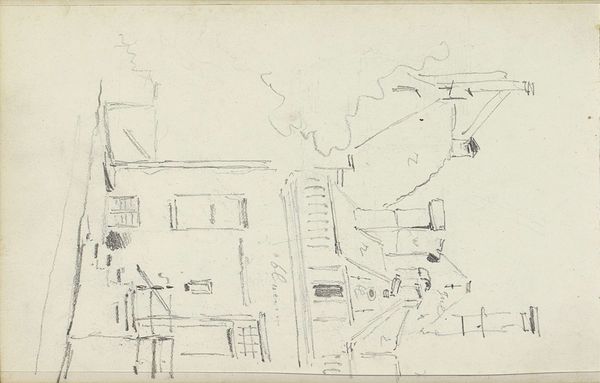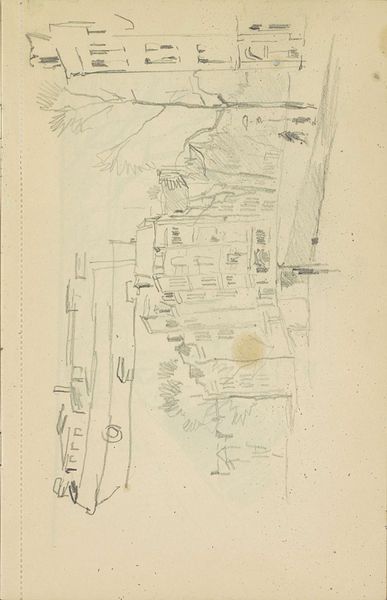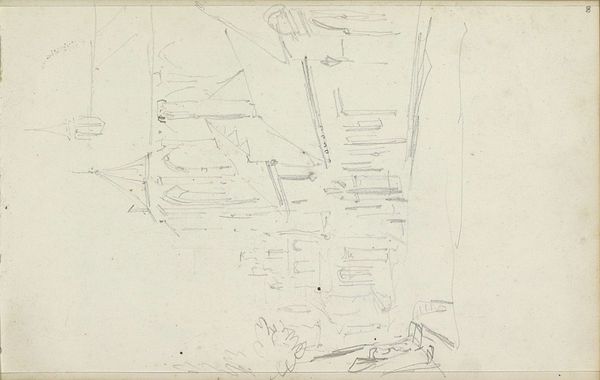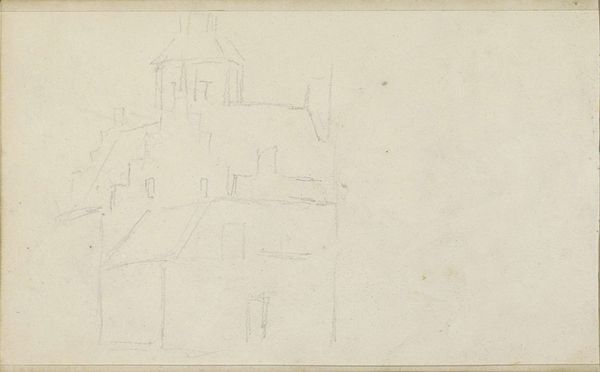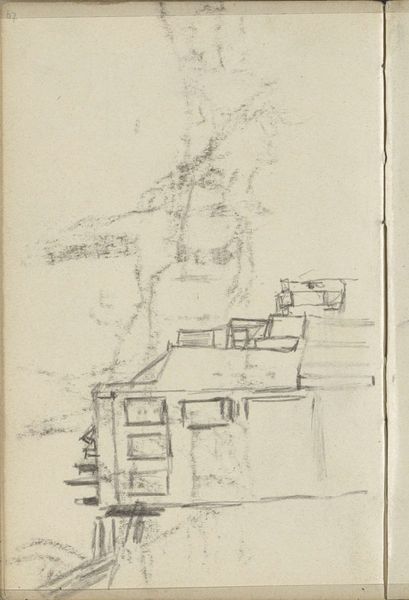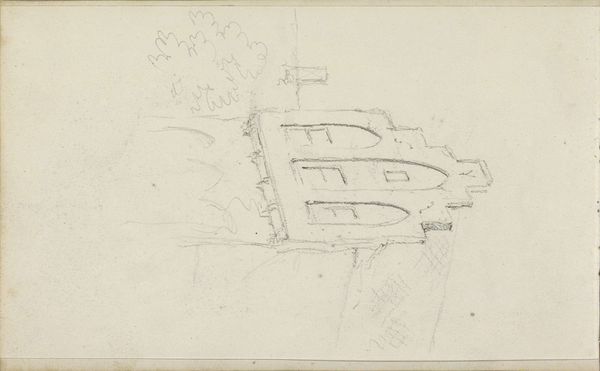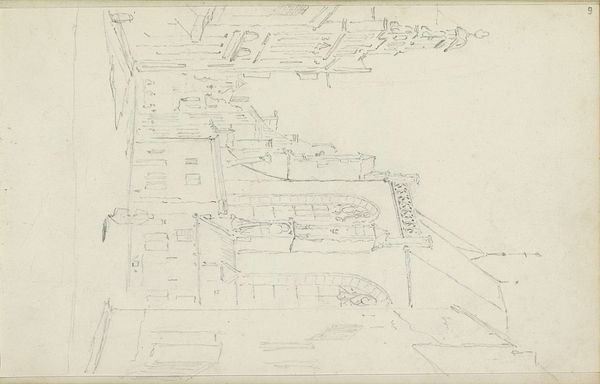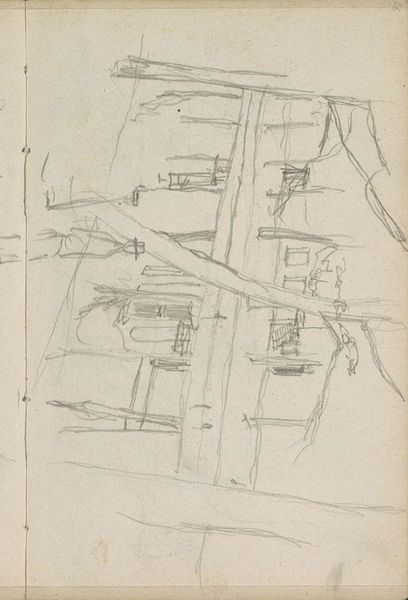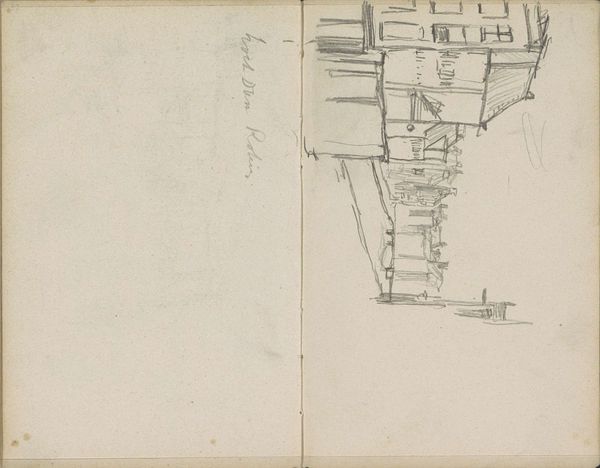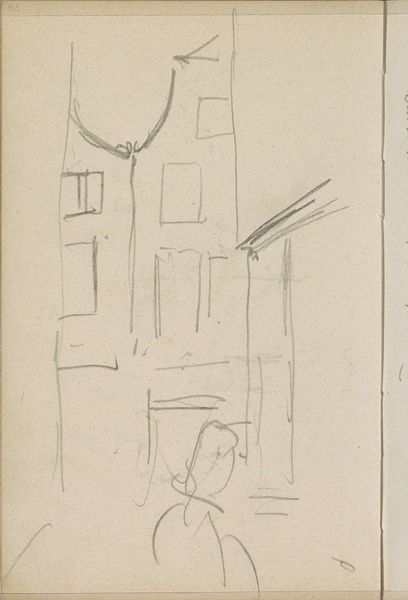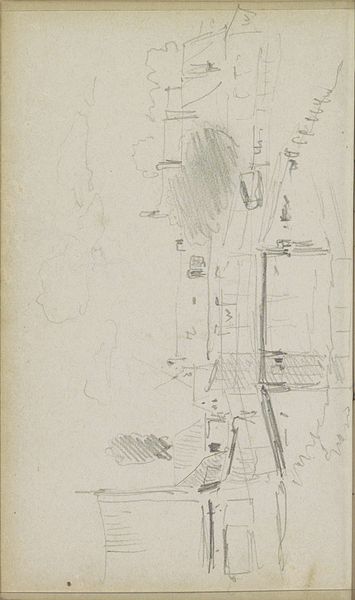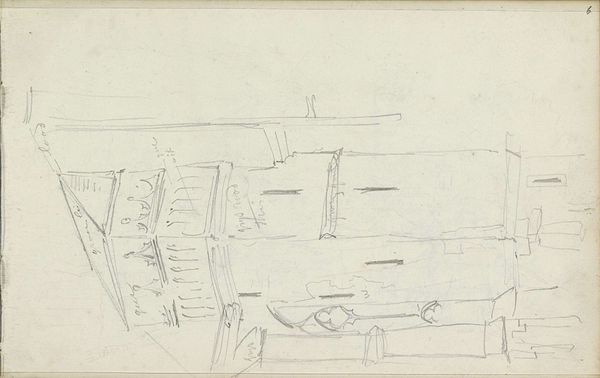
drawing, pencil
#
drawing
#
amateur sketch
#
aged paper
#
toned paper
#
light pencil work
#
sketched
#
incomplete sketchy
#
hand drawn type
#
landscape
#
personal sketchbook
#
pencil
#
square
#
line
#
sketchbook drawing
#
sketchbook art
#
street
#
realism
Copyright: Rijks Museum: Open Domain
Curator: At first glance, this drawing conveys a certain stillness. The artist has used the barest of means to capture what I suspect is a quiet street. Editor: Indeed. This work is cataloged as "Gezicht op een straat of plein, mogelijk te Kampen," meaning "View of a street or square, possibly in Kampen." It’s a pencil drawing by Adrianus Eversen, made sometime between 1828 and 1897. Eversen is primarily known for his paintings, particularly his townscapes, so it is interesting to examine his sketches, which are, let's say, more intimate and less focused on perfection than a commissioned painting would be. We might be seeing something quite authentic, an insight to Eversen's approach as an artist, his eye finding a moment or view to work from. Curator: There’s an ambiguity here that’s quite appealing. While Eversen hints at architectural details, it feels more like a suggestion than a precise record. This openness invites us to consider our own connection to similar urban spaces, perhaps a familiar street we walked daily, invested with personal and cultural meaning. There's something enduring in our desire to capture spaces that house daily life, from humble sketches to detailed city plans. The sketchy style offers a window to the ephemeral act of the creation. Editor: I agree. The lines are spare, but they're doing a lot of work. Notice how, even with so few strokes, Eversen implies perspective and volume. We read the spatial depth despite the sketch's unfinished nature. Even the paper's age contributes—the warm tone adding a layer of nostalgia or perhaps a longing for a past we never experienced but still recognize through visual cues. There are suggestions of public service announcements to an historic moment caught in time. Curator: It makes me consider the act of sketching itself as a way to map not just physical space, but also the socio-political climate of a place, too. Who walks these streets? What kind of transactions or interactions occur? These kinds of things might occur to a contemporary eye looking back at a relatively untouched piece of the artist's world. This may just be a quickly rendered study, but it provokes deeper inquiries. Editor: I’m left wondering if this was an isolated study or part of a larger sketchbook. I appreciate its raw, unfiltered view of everyday life. Curator: A quiet moment observed, inviting reflection.
Comments
No comments
Be the first to comment and join the conversation on the ultimate creative platform.
